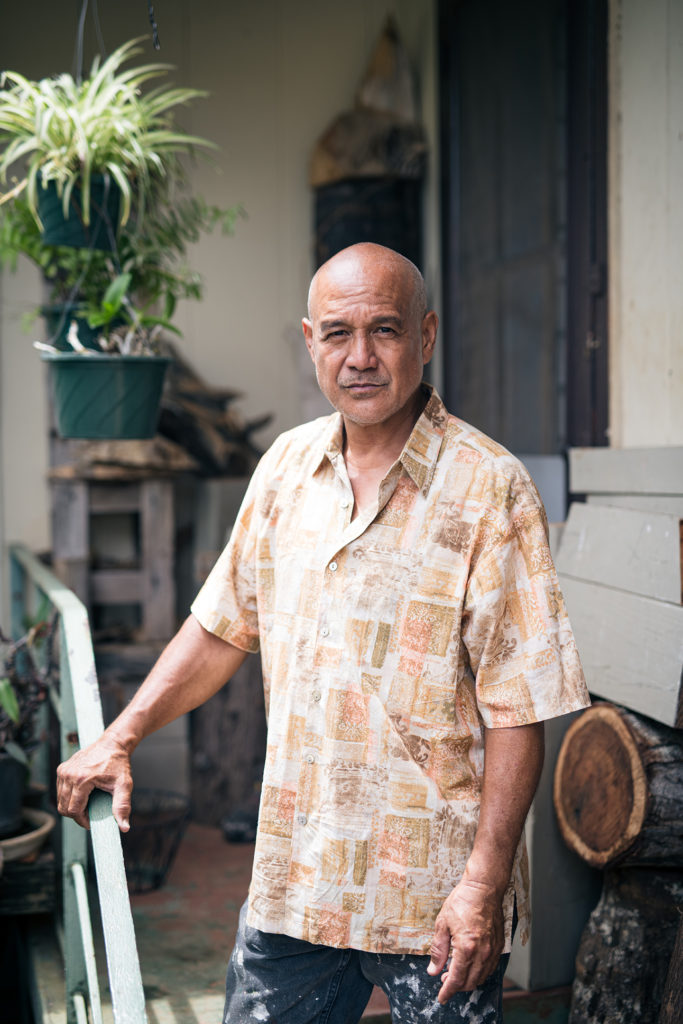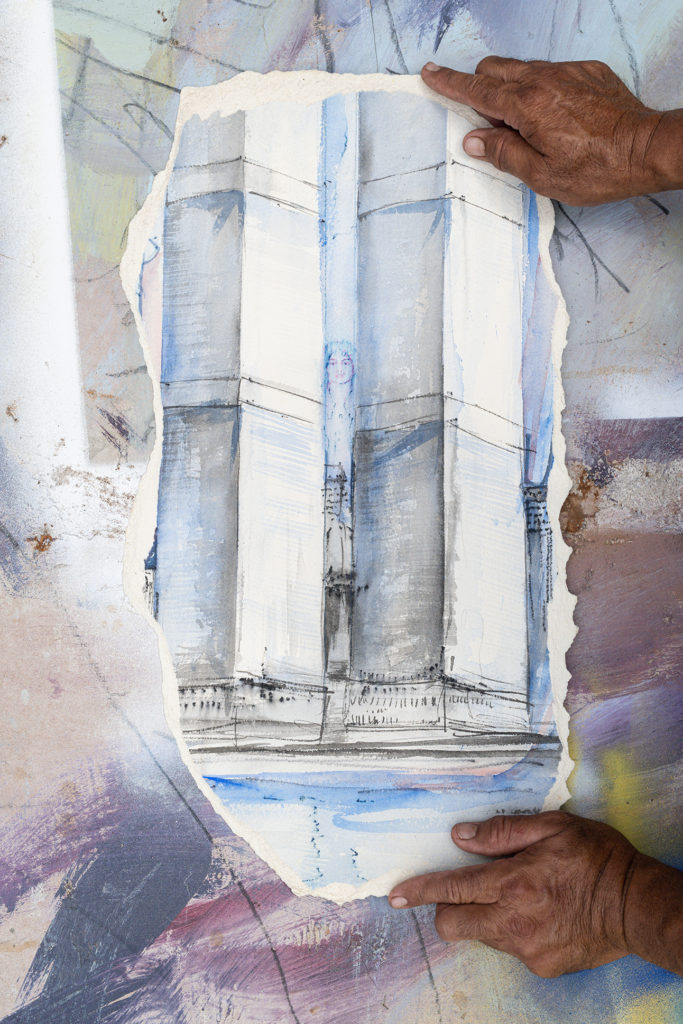Text by Lindsey Vandal
Images by Chris Rohrer
Before he was old enough to wield a pencil or paintbrush, Kahi Ching was interpreting the world around him with an artist’s eye. “I was drawing things in the sand. I would draw with burnt wood or carve into a potato with my fingernails,” he says. At 5 years old, he began to collect treasures from the beach fronting his Kāne‘ohe home—sea glass, driftwood, glass bottles, rocks, and wood scraps—arranging them neatly and sketching what he saw.
As he grew, Ching’s drawings became more intricate. In grade school, he struggled with dyslexia, and making art allowed him to express what words could not.
“Drawing and painting, that was my language, and that is still my language today,” he says.
You May Also Like: Growing Up Gifted

He would sit on the beach and study the sky, the ocean currents, and the texture of sand. He spent hours contemplating the journey taken by a piece of wood or sea glass in order to translate every detail into his art, to tell the story of the object through the grain of the weathered wood or the shininess of the glass.
“I pay attention to everything,” he says. “Curiosity is the best inspiration for finding the truth and the beauty of the cosmos.”
At 11 years old, Ching created his first oil painting, a seascape, which became his first piece to sell. A breakout student of the gifted art program at Castle High School, he was painting sets for the theater department and putting up murals on the school’s walls. At 18 years old, he won a national arts contest with his pencil drawing, Curios. The prize included a scholarship to the Rudolph Schaeffer School of Design in San Francisco, where he says, “The experiences of talking story and riding the BART did as much to expand my thinking as art school.”


Over the course of his life, Ching’s art practice has taken many forms, each an extension of his ongoing quest to capture “the beautiful lines all around us,” he says. He has experimented with sign painting, ceramics, wood sculpture, concrete furniture, and public art, and for a time he ran his own gallery.
His latest endeavors include creating a 12-foot-tall glass, metal, and stone sculpture for Hilo Union School, mastering the Japanese art of bonsai in his home garden, and experimenting with music. After he finished designing and painting a mural at Turtle Bay Resort in 2020, Ching was asked if he played guitar. Always up for a challenge, he wrote his first song on the spot and played it for a small audience.

On the cusp of turning 60, Ching regards getting older as an opportunity to see more of what he calls “the linework or heartbeat of life” and to mentor other aspiring artists. “Now I’m learning how to be an elder, so I can share the wonder of what is—look at that color, listen to that song, smell that fragrance!” he says. “I’m talking story with my children and my neighbors and learning about other cultures. All of this is in the linework of my art.”





